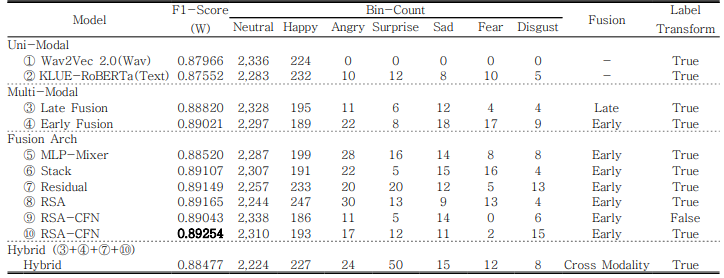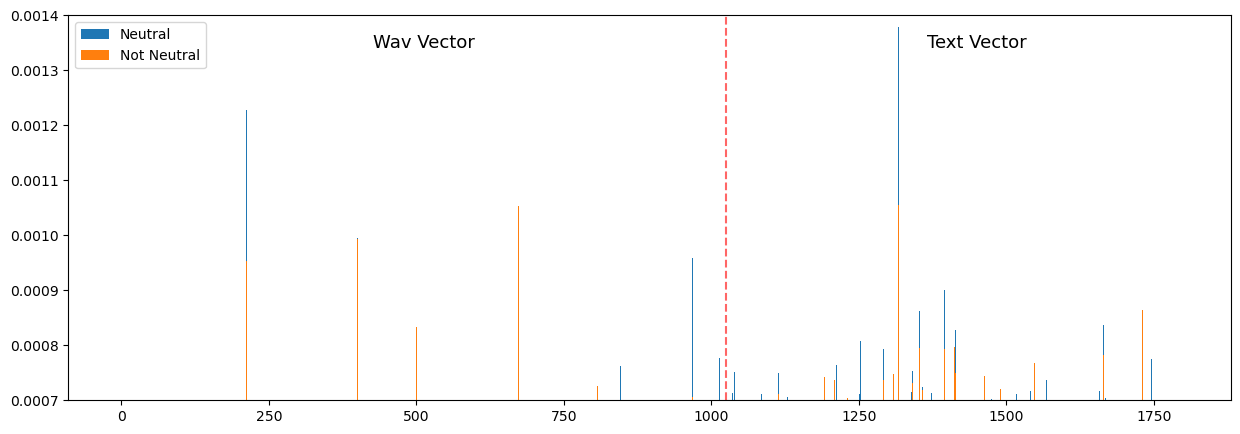This repository contains the code for the paper [Residual Self-Attention Cross Fusion Network] submitted to 2023 HumanUnderstanding AI Paper Competition
Paper : 20-727.pdf
Autors: @hyeonho1028,@zerojin91, @aibjw
Python 3.9.X
We use conda to manage the environment. You can create the environment by running the following command:
conda env create -f environment.yaml
conda activate rsa_cfn
To run the code, you need to download the dataset from here and put it in the data folder as KEMDy20_v1_1/.
The folder structure should be like this:
├── data # Data folder
│ └── KEMDy20_v1_1 # <-- Put the datafiles here
├── img # Images folder
│ ├── arch/.. # Model Arch. Structure
│ └── Self-Attention.. # Others Images
├── src # Source code
│ ├── data.py # to load data
│ ├── layer.py # attention layer and cross fusion layer
│ ├── loader.py # data loader
│ ├── models.py # model architecture
│ └── trainer.py # trainer for training and validation
├── script # Script folder
│ └── exp_shell.sh # Shell script for Experiment
├── requirements.yaml # Environment setting
├── main.py # Main script to run the code
└── README.md # Description of the project
python main.py --argument1 value1 --argument2 value2 ...To run main.py script, you need to specify the following arguments:
Argument |
Description | Default |
|---|---|---|
| --data_path | Path to data directory | 'data/KEMDy20_v1_1/' |
| --output_dir | Path to output directory | 'models/' |
| --ver | Version name to logging | 'baseline' |
| --audio_max_lens | Number of Audio max lengths | 96000 |
| --text_max_lens | Number of Text max lengths | 256 |
| --num_classes | Number of classes | 7 |
| --seed | Random seed | 42 |
Argument |
Description | Default |
|---|---|---|
| --device | Device type {cuda,cpu,mps} |
'cuda' |
| --use_amp | Use Automatic Mixed Precision for training | True |
Argument |
Description | Default |
|---|---|---|
| --label_transform | Perform label transformation | False |
| --batch_weighted_sampler | Use batch weighted sampler for training | False |
Argument |
Description | Default |
|---|---|---|
| --batch_size | Batch size for training | 16 |
| --val_batch_size | Batch size for validation | 32 |
| --lr | Learning rate | 1e-5 * |
| --epochs | Number of epochs for training | 10 |
| --weight_decay | Weight decay | 0.0 |
* In wav2vec 2.0, the learning rate is set to 1e-4.
Argument |
Description | Default |
|---|---|---|
| --use_wav | Use wav2vec feature for training | False |
| --use_concat | Concatenate modalities for training | False |
| --multimodal_method | Multimodal method for training {early_fusion,late_fusion,mlp_mixer,stack,residual,rsa,rsa_cfn,hybrid_fusion} |
'early_fusion' |
Argument |
Description | Default |
|---|---|---|
| --wav_model | Pre-trained wav2vec model | 'facebook/wav2vec2-large-960h-lv60-self' |
| --pooling_mode | Pooling mode for feature extraction | 'mean' |
| --rnn_model | Pre-trained RNN model {xlm-roberta-base,xlm-roberta-large,klue/roberta-base,klue/roberta-large} |
'klue/roberta-base' |
We provide various multimodal models.
You can specify the models by using --multimodal method argument. The following table shows the available models to choose from.
Model |
Fusion Method |
Argument |
|---|---|---|
| Early Fusion | Early | early-fusion |
| Late Fusion | Late | late-fusion |
| MLP-Mixer* | Early | mlp_mixer |
| Stack | Early | stack |
| Residual | Early | residual |
| RSA | Early | rsa |
| RSA-CFN | Early | rsa_cfn |
| Hybrid | Cross-Modality | hybrid_fusion |
* MLP-Mixer is the first winner of the 2022 HumanUnderstanding AI Paper Competition. We use the same architecture as the reference.
Please read the description in scripts/exp_shell.sh script for more details.
You can find the agument setting for each experiment in script.
The following table shows the architecture of each model.
| Late Fusion | Early Fusion |
|---|---|
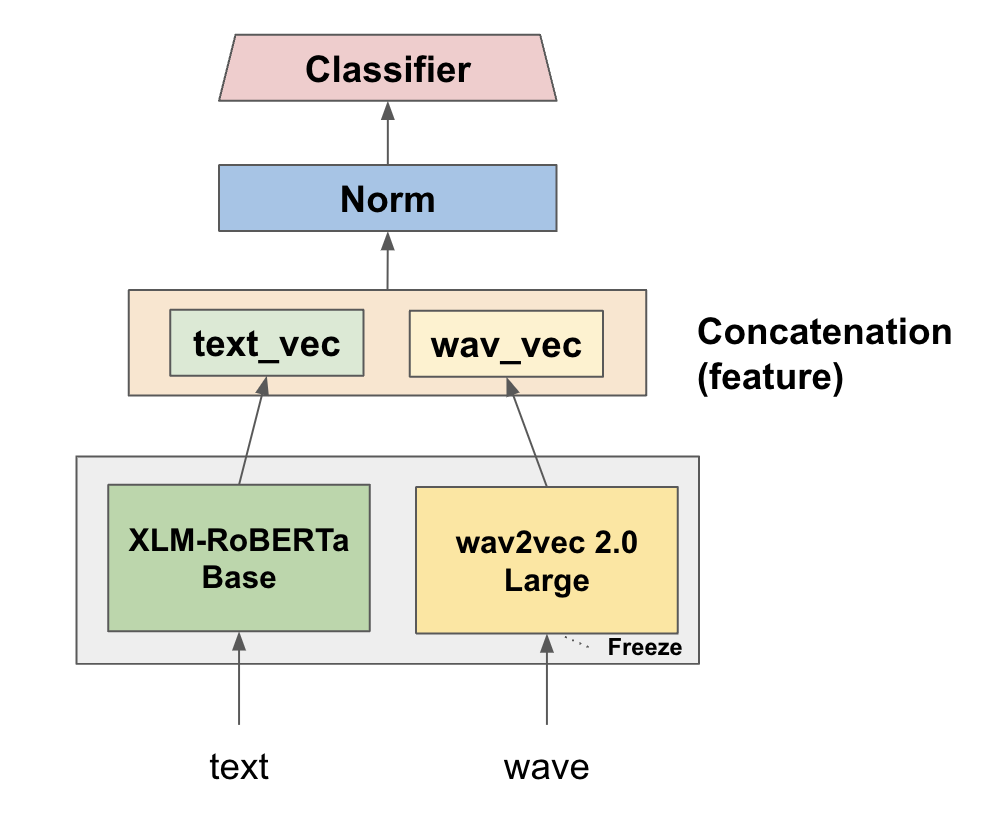 |
 |
| Stack | Residual |
|---|---|
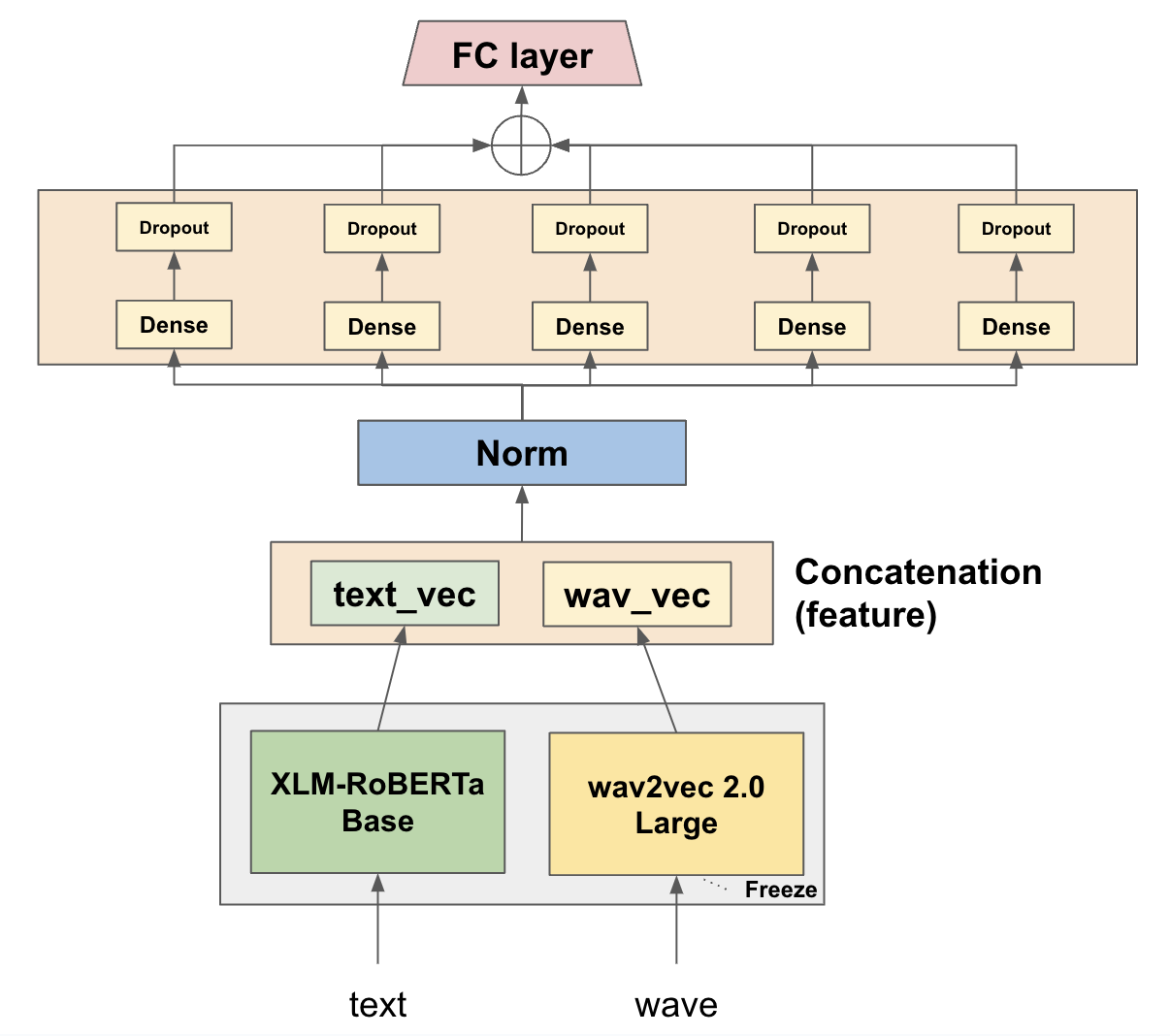 |
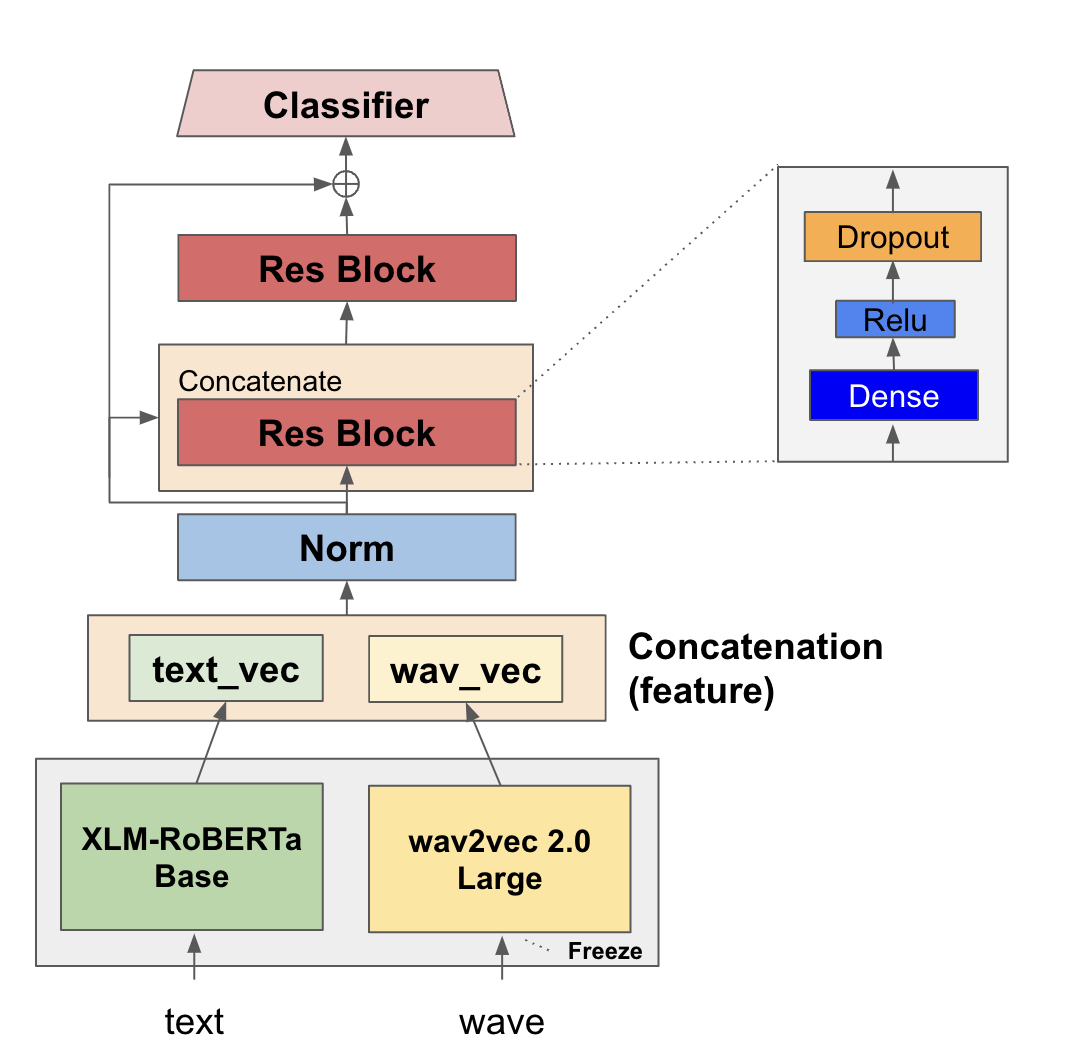 |
| RSA | RSA-CFN |
|---|---|
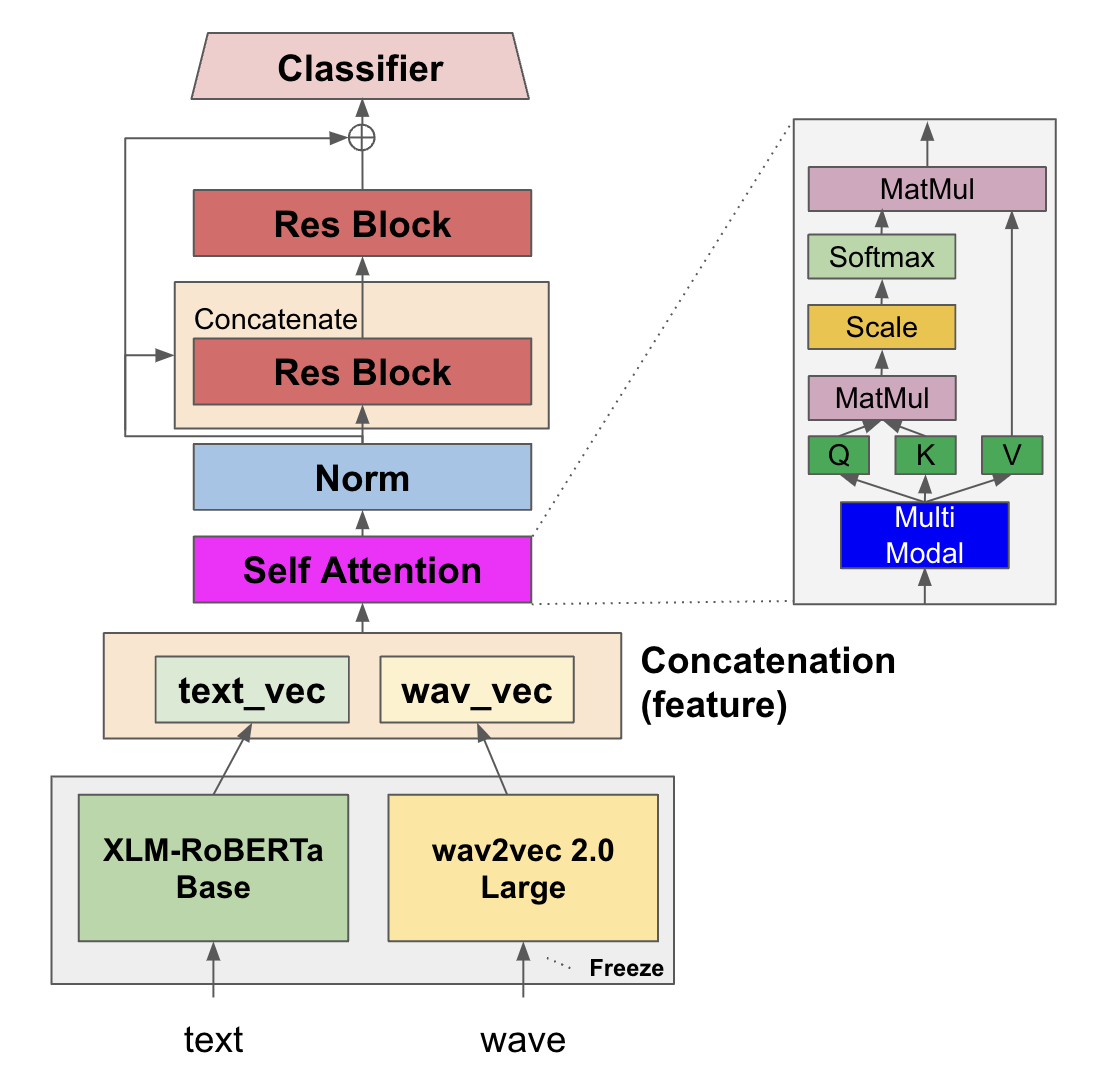 |
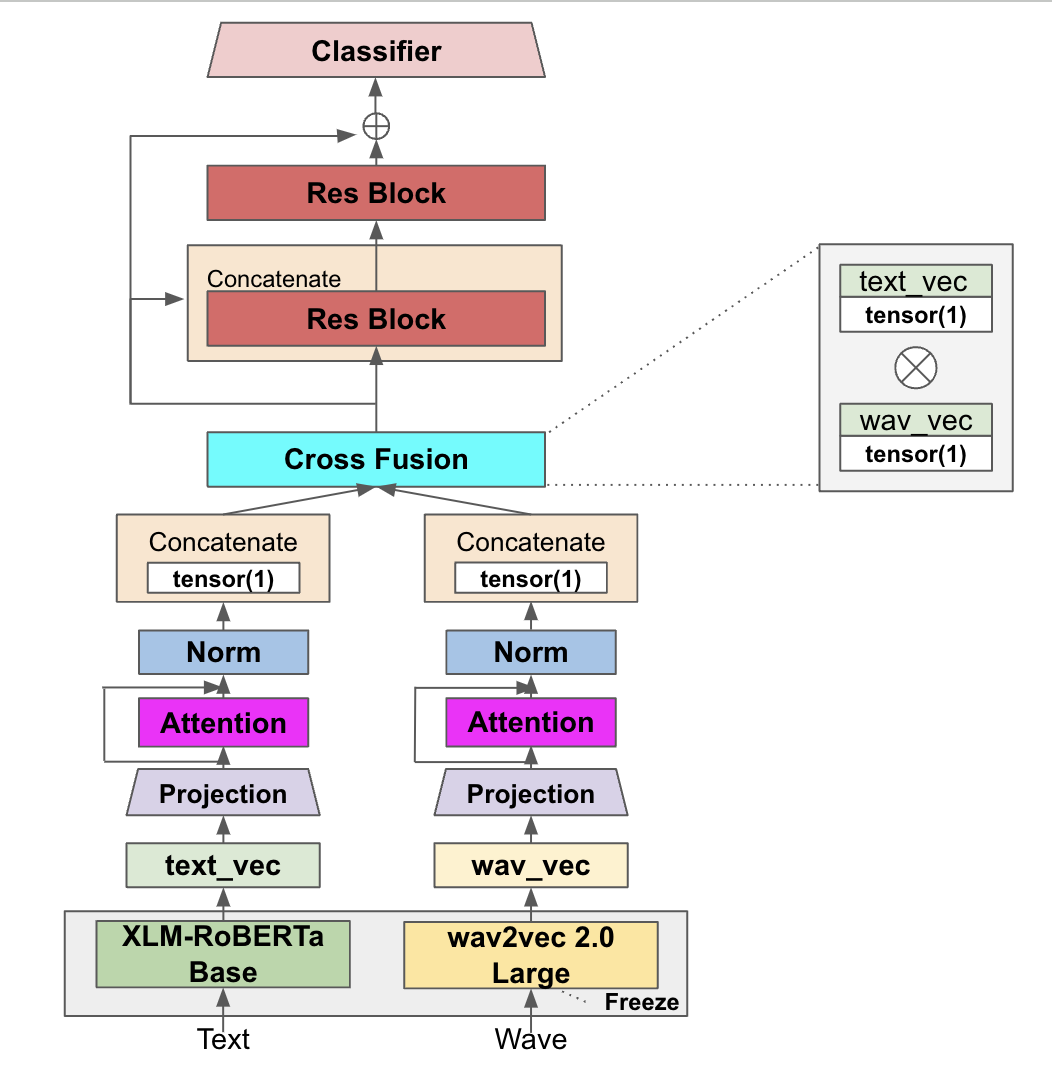 |
The following table shows the weighted F1-Score of each PLMs. we can see that the KLUE-RoBERTa model model is better than the XLM-RoBERTa.
The following table shows the weighted F1-Score of each models.
A score of RSA-CFN with label transform is the best score in this experiment.
The image below shows the attention weight of each multimodal method.
Please read the paper for more details.
This repository is released under the Apache License 2.0. License can be found in LICENSE file.
- Baevski, Alexei, et al. "wav2vec 2.0: A framework for self-supervised of speech representations." Advances in neural information processing systems 33 (2020): 12449-12460.
- Liu, Yinhan, et al. "Roberta: A robustly optimized bert pretraining approach." arXiv preprint arXiv:1907.11692 (2019).
- Conneau, Alexis, et al. "Unsupervised cross-lingual representation learning at scale." arXiv preprint arXiv:1911.02116 (2019).
- wav2vec 2.0
- XLM-RoBERTa

